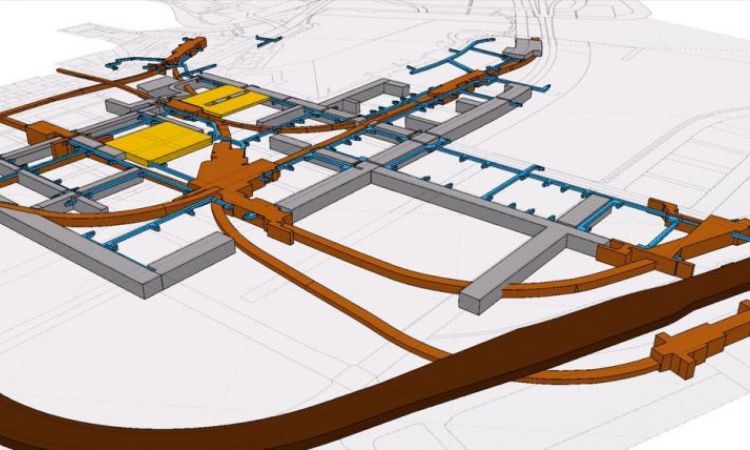
The global underground utility mapping market size is estimated to be worth USD 1,308.56 million in 2023 and is expected to reach USD 3,485.66 million by 2032, increasing at a robust CAGR of 11.5% between 2024 and 2032. This significant growth highlights the expanding importance of accurate underground mapping in various sectors and the technological advancements driving this trend. In this blog post, we will delve into the key market trends, technological solutions, service components, end-use applications, regional analysis, and the competitive landscape shaping the future of underground utility mapping.
Market Trends and Growth
The underground utility mapping market is experiencing rapid growth driven by increasing urbanization, infrastructural development, and the need for accurate mapping to prevent utility damages and ensure efficient management. The growing demand for reliable and real-time data on underground utilities is spurring technological advancements and increasing adoption across various industries. With a projected CAGR of 11.5%, the market’s expansion reflects the rising importance of integrating sophisticated mapping solutions into infrastructure planning and management.
Technological Solutions
Electromagnetic Induction
Electromagnetic induction is a widely used technology in underground utility mapping. It involves the use of electromagnetic fields to detect and map utilities buried underground. This method is known for its effectiveness in locating metallic utilities such as pipes and cables. Electromagnetic induction offers advantages such as high accuracy and the ability to penetrate various soil conditions. However, its limitations include reduced effectiveness in identifying non-metallic utilities and potential interference from other electromagnetic sources.
Ground Penetrating Radar (GPR)
Ground Penetrating Radar (GPR) is another prominent technology in the field. GPR uses radar pulses to detect and map subsurface structures. This non-invasive method is effective in identifying both metallic and non-metallic utilities, making it a versatile tool for comprehensive underground mapping. GPR provides high-resolution images of subsurface conditions, which are crucial for accurate utility identification. Nevertheless, GPR’s effectiveness can be influenced by soil composition and moisture levels.
Other Emerging Technologies
In addition to electromagnetic induction and GPR, several other technologies are emerging in the underground utility mapping market. These include acoustic methods, laser scanning, and integrated multi-sensor systems. These technologies aim to enhance accuracy, reduce detection time, and improve data integration for better decision-making in utility management.
Market Segmentation
By Components
Technological Solutions
The technological solutions segment is the largest contributor to the market, driven by advancements in mapping technologies and increasing adoption of sophisticated tools. Electromagnetic induction and GPR are the primary technologies used, each offering distinct advantages depending on the application.
Services
The services segment encompasses both professional and managed services. Professional services include consulting, training, and technical support, while managed services involve outsourcing mapping and maintenance tasks to specialized providers. These services are essential for ensuring the effective implementation and operation of mapping technologies.
By Services
Professional Services
Professional services play a crucial role in the underground utility mapping market. These services include expert consulting, project management, and training, which are vital for the successful deployment and utilization of mapping technologies. Professional services help organizations optimize their mapping strategies and achieve accurate results.
Managed Services
Managed services offer a comprehensive solution for managing and maintaining underground utility mapping systems. Providers of managed services handle all aspects of mapping, from equipment management to data analysis, allowing organizations to focus on their core activities while ensuring high-quality mapping results.
End Use Applications
Oil and Gas
The oil and gas sector is a significant end user of underground utility mapping services. Accurate mapping is essential for locating pipelines, cables, and other infrastructure critical to oil and gas operations. Proper utility mapping helps prevent accidents, optimize maintenance schedules, and enhance safety in hazardous environments.
Others
Besides oil and gas, various other industries benefit from underground utility mapping, including construction, transportation, and telecommunications. Each of these sectors relies on accurate utility data to avoid costly disruptions, streamline operations, and ensure the safety of their infrastructure projects.
Regional Analysis
North America
In North America, the underground utility mapping market is characterized by advanced technology adoption and significant infrastructure investments. The region’s growth is driven by the need for accurate utility mapping in urban development and infrastructure maintenance.
Europe
Europe’s market growth is supported by stringent regulations and increasing infrastructure projects. The region is witnessing significant advancements in mapping technologies, with a focus on enhancing accuracy and efficiency in utility management.
Asia-Pacific
The Asia-Pacific region is experiencing rapid urbanization and infrastructure development, driving the demand for underground utility mapping solutions. Countries like China and India are investing heavily in infrastructure projects, contributing to the market’s growth.
Latin America
In Latin America, the market is growing due to increasing infrastructural development and urbanization. The demand for accurate utility mapping is rising as countries in the region invest in improving their infrastructure networks.
Middle East and Africa
The Middle East and Africa region is seeing growth in underground utility mapping driven by infrastructure development and urbanization. The region’s focus on modernizing its infrastructure is fueling the demand for advanced mapping solutions.
Competitive Landscape
Major Players
The underground utility mapping market is competitive, with several key players leading the industry. Major companies include [Company A], [Company B], and [Company C], each offering innovative technologies and services. These companies are focusing on enhancing their product offerings, expanding their geographic reach, and forming strategic partnerships to strengthen their market positions.
Market Share Analysis
The market share of key players varies based on their technological expertise, service offerings, and regional presence. Leading companies are leveraging their strengths in technology and services to capture a significant share of the growing market.
Forecast and Outlook (2024-2032)
The underground utility mapping market is expected to continue its robust growth trajectory from 2024 to 2032. Advancements in technology, increasing demand for accurate utility mapping, and growing infrastructure investments are likely to drive market expansion. The future outlook indicates a continued emphasis on integrating advanced technologies and expanding service offerings to meet the evolving needs of various industries.
Read More:
Global Integration Platform as a Service (iPaaS) Market